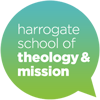
- This event has passed.
Lecture – David M. Moffitt

Looking through the Kaleidoscope: Hebrews’ Use of Old Testament Narratives in the Light of Jesus’ Ascension and Awaited Return (live lecture)
Hebrews’ engagement with the Old Testament is among the most exciting and creative in the New Testament. It creates a kaleidoscope of Biblical texts so that their interaction draws out the author’s fundamental convictions about Jesus. The resulting images bring out new theological insights about Jesus and the congregation.
We will explore three Old Testament figures mentioned in Hebrews—the high priest, Moses, and Joshua.
All three of these figures left God’s people to do important work for them, before returning. This return of the absent figure forms a significant, part of Hebrews’ argument. Thus joined together they illuminate who Jesus is. They also show what the ascended Christ is doing for us now and how we should understand our own identity and situation as we await his return.
David Moffitt is one of the very few contemporary scholars to provide fresh and compelling readings of the enigmatic Letter to the Hebrews. I have learned an enormous amount from him; in fact I credit him with transforming my whole understanding of sacrifice in biblical thought. Also, unlike some top exegetical scholars, he is a lively and engaging speaker! – Tom Wright
Speaker Bio
Dr Moffitt was appointed Reader in New Testament Studies at St Andrews University in 2013, having previously taught New Testament at Duke Divinity School and Campbell University Divinity School. His research interests orbit around the various ways the earliest Christians understood Jesus and their own identities in relation to Jewish scripture, practices, and beliefs. His work is especially focused on the Epistle to the Hebrews and the strategies the text employs to interpret early Christian claims about Jesus’ person, death, resurrection, and ascension in high-priestly and sacrificial terms. His book on Hebrews (Atonement and the Logic of Resurrection in the Epistle to the Hebrews) attempts to show that the Christology and Soteriology developed by the author rests upon his correlation of the basic narrative of early Christian proclamation (i.e., Jesus’ life, death, resurrection, and ascension) with the ritual process of the Yom Kippur sacrifices, the end goal of which was the restoration and maintenance of fellowship between God and creation (i.e., atonement).
